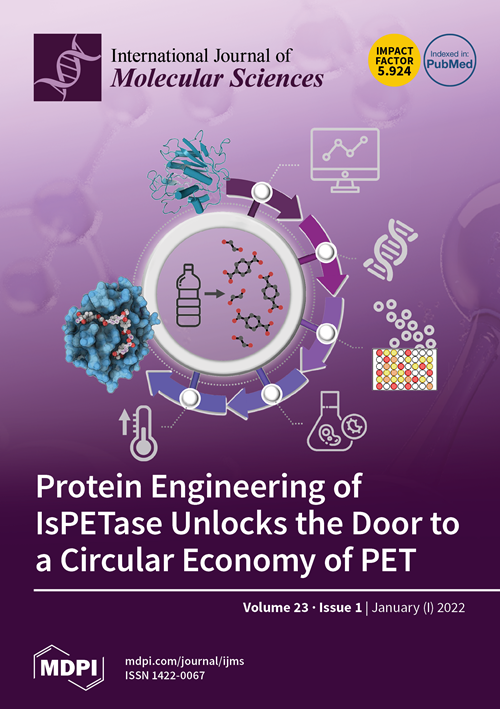黄瓜 TIFY 基因家族的泛基因组分析和 CsTIFY 基因的功能分析
IF 4.9
2区 生物学
Q1 BIOCHEMISTRY & MOLECULAR BIOLOGY
引用次数: 0
摘要
黄瓜经常受到灰霉病病原菌 Botrytis cinerea 的影响,这种病原菌会抑制黄瓜的生长并导致黄瓜减产。茉莉酸(JA)在植物对生物胁迫的反应中起着主要作用,而茉莉酸-ZIM-Domain(JAZ)蛋白是 JA 信号通路的关键调控因子。在这项研究中,我们利用 12 个黄瓜品种的泛基因组来鉴定黄瓜 TIFY 基因。我们的研究结果表明,两个CsTIFY基因存在于所有12个黄瓜品种中,并且在蛋白质序列、基因结构和基序组成上没有差异。这表明它们在不同黄瓜品种间的进化过程中保持不变,并暗示它们可能在黄瓜生长过程中发挥关键作用。另一方面,其他 14 个 CsTIFY 基因在蛋白质序列和基因结构或保守的主题方面表现出变异,这可能是这些基因适应不同栽培和环境条件而发生分化进化的结果。对 CsTIFY 基因表达谱的分析表明,它们受 B. cinerea 的调控存在差异。与对照植株相比,过表达 CsJAZ2、CsJAZ6 或 CsZML2 的瞬时转染植株更容易受到 B. cinerea 感染。此外,这些受病原体感染的植物显示出较低水平的 POD、SOD 和 CAT 酶活性。重要的是,黄瓜子叶感染 B. cinerea 后,植株中的 JA 含量上调,与用水预处理的植株相比,用外源 MeJA 预处理的黄瓜子叶对 B. cinerea 感染的抵抗力增强。因此,本研究基于生物信息学分析探讨了调控黄瓜生长和适应不同栽培环境的关键TIFY基因,并证明CsJAZs通过多种信号通路负向调控黄瓜对灰霉病的抗病性。本文章由计算机程序翻译,如有差异,请以英文原文为准。
Pan-Genome Analysis of TIFY Gene Family and Functional Analysis of CsTIFY Genes in Cucumber
Cucumbers are frequently affected by gray mold pathogen Botrytis cinerea, a pathogen that causes inhibited growth and reduced yield. Jasmonic acid (JA) plays a primary role in plant responses to biotic stresses, and the jasmonate-ZIM-Domain (JAZ) proteins are key regulators of the JA signaling pathway. In this study, we used the pan-genome of twelve cucumber varieties to identify cucumber TIFY genes. Our findings revealed that two CsTIFY genes were present in all twelve cucumber varieties and showed no differences in protein sequence, gene structure, and motif composition. This suggests their evolutionary conservation across different cucumber varieties and implies that they may play a crucial role in cucumber growth. On the other hand, the other fourteen CsTIFY genes exhibited variations in protein sequence and gene structure or conserved motifs, which could be the result of divergent evolution, as these genes adapt to different cultivation and environmental conditions. Analysis of the expression profiles of the CsTIFY genes showed differential regulation by B. cinerea. Transient transfection plants overexpressing CsJAZ2, CsJAZ6, or CsZML2 were found to be more susceptible to B. cinerea infection compared to control plants. Furthermore, these plants infected by the pathogen showed lower levels of the enzymatic activities of POD, SOD and CAT. Importantly, after B. cinerea infection, the content of JA was upregulated in the plants, and cucumber cotyledons pretreated with exogenous MeJA displayed increased resistance to B. cinerea infection compared to those pretreated with water. Therefore, this study explored key TIFY genes in the regulation of cucumber growth and adaptability to different cultivation environments based on bioinformatics analysis and demonstrated that CsJAZs negatively regulate cucumber disease resistance to gray mold via multiple signaling pathways.
求助全文
通过发布文献求助,成功后即可免费获取论文全文。
去求助
来源期刊

International Journal of Molecular Sciences
Chemistry-Organic Chemistry
CiteScore
8.10
自引率
10.70%
发文量
13472
审稿时长
17.49 days
期刊介绍:
The International Journal of Molecular Sciences (ISSN 1422-0067) provides an advanced forum for chemistry, molecular physics (chemical physics and physical chemistry) and molecular biology. It publishes research articles, reviews, communications and short notes. Our aim is to encourage scientists to publish their theoretical and experimental results in as much detail as possible. Therefore, there is no restriction on the length of the papers or the number of electronics supplementary files. For articles with computational results, the full experimental details must be provided so that the results can be reproduced. Electronic files regarding the full details of the calculation and experimental procedure, if unable to be published in a normal way, can be deposited as supplementary material (including animated pictures, videos, interactive Excel sheets, software executables and others).
 求助内容:
求助内容: 应助结果提醒方式:
应助结果提醒方式:


